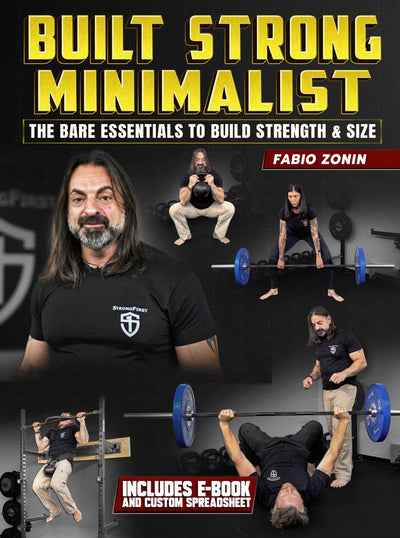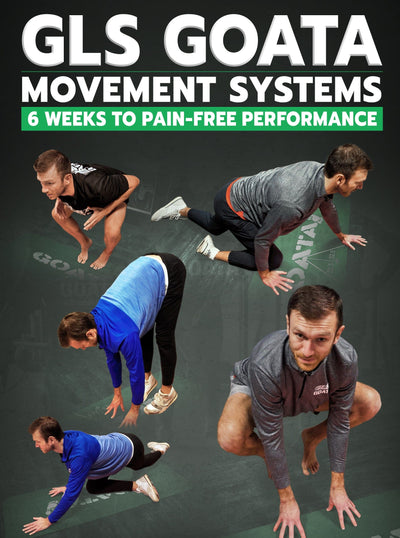Kettlebell Workouts
Kettlebell workouts have emerged as a powerful and versatile form of exercise, captivating fitness enthusiasts worldwide with their unique blend of strength, cardio, and functional training. These cannonball-shaped weights are no ordinary dumbbells; they offer a host of benefits that make them an essential addition to any fitness regimen. In this piece, we'll delve into the world of kettlebell workouts, exploring their numerous advantages, various types of exercises, and how to devise an effective kettlebell exercise routine.
What this article covers:
- The Background of Kettlebell Workouts
- Benefits of Using Kettlebells
- Types of Kettlebell Exercises
- How to Devise a Kettlebell Workout
The Background of Kettlebell Workouts
Kettle bell workouts, often associated with Russian strength training, have a rich and diverse history that spans centuries. Understanding the origins of kettlebells can shed light on their enduring popularity in the fitness world.
Historical Roots: Kettlebells, originally known as "girya" in Russia, made their first appearance in the 18th century. Initially, they were used as counterweights for Russian market traders to measure goods. Soon, it became evident that these weights were not only functional but also versatile for strength and conditioning.
Russian Strength Training: In the 19th century, Russian strongmen and circus performers began incorporating kettlebells into their training routines. The kettlebell's unique shape allowed for a wide range of exercises that built strength, flexibility, and endurance. Strongmen like Vladimir Romanov and Pyotr Kryloff popularized kettlebell lifting demonstrations, showcasing incredible feats of strength.
Military and Sport: Kettlebells found their way into the Russian military training programs. Soldiers trained with kettlebells to develop the physical prowess necessary for their demanding roles. Additionally, kettlebell lifting became a competitive sport in Russia, with standardized rules and competitions dating back to the early 20th century.
Spread to the West: Kettlebells remained relatively unknown outside of Russia until the late 20th century. The fall of the Iron Curtain and increased global communication led to the exchange of fitness knowledge. Pavel Tsatsouline, a former Soviet Special Forces physical training instructor, played a crucial role in introducing kettlebell training to the Western world. He authored books and conducted workshops, popularizing kettlebell workouts in the United States and Europe.
Benefits of Using Kettlebells
Kettlebells offer a plethora of advantages for those seeking a comprehensive fitness regimen. Here are some key benefits:
Full-Body Workout: Kettlebell exercises engage multiple muscle groups simultaneously, ensuring a comprehensive, full-body workout. This leads to improved overall strength and endurance.
Functional Strength: Kettlebell training focuses on movements that mimic real-life activities, enhancing functional strength and coordination. This is especially beneficial for everyday tasks and sports performance.
Cardiovascular Fitness: Kettlebell exercises often involve dynamic movements, which raise the heart rate and improve cardiovascular health. It's a fantastic way to combine strength and cardio in one session.
Fat Loss: The high-intensity nature of kettlebell workouts burns calories rapidly, making them an effective tool for weight management and fat loss.
Improved Posture and Core Strength: Many kettlebell exercises require a strong core and promote better posture. They help to prevent back pain and create a stable foundation for daily activities.
Types of Kettlebell Exercises
Kettlebell Rows: This exercise targets the upper back and biceps. It involves bending at the hips and knees while maintaining a flat back, then pulling the kettlebell towards your hip, engaging your lats and rear deltoids.
Kettlebell Figure 8s: Figure 8s work on coordination, balance, and core strength. Pass the kettlebell between your legs in a figure-8 pattern, challenging your core and lower body stability.
Kettlebell Renegade Rows: This exercise combines a push-up with a row, engaging the chest, triceps, and upper back. It's an excellent choice for building upper body and core strength.
Kettlebell Swings Variations: In addition to the two-handed swings, you can experiment with one-handed swings, alternating swings, or high swings. These variations add diversity to your workout routine.
Kettlebell Lunges: Holding a kettlebell in each hand can enhance the intensity of lunges, working the quadriceps, hamstrings, and glutes.
How to Devise a Kettlebell Workout
Progressive Overload: As you become comfortable with your routine, gradually increase the weight of your kettlebell. This helps ensure continued progress and muscle development.
Circuit Training: Create a circuit with a combination of exercises to keep your workout engaging. For example, a circuit could include swings, squats, and Turkish get-ups. Perform each exercise for a set number of reps before moving on to the next.
Tabata Intervals: Tabata workouts involve high-intensity intervals with short rest periods. For instance, you could perform kettlebell swings at maximum effort for 20 seconds, followed by 10 seconds of rest. Repeat this cycle for several rounds.
Pyramid Training: Start with a low number of repetitions for each exercise, and then gradually increase them in a pyramid fashion, before decreasing again. For example, start with 3 reps of each exercise, then do 6, 9, 12, and back down to 3.
Complexes: Complexes involve performing a series of exercises in succession with the same kettlebell. For instance, you could do a clean, followed by a squat, and then a press without putting the kettlebell down.
Active Rest: Instead of traditional rest between sets, use active rest periods. Incorporate exercises like planks or bodyweight squats to keep your heart rate up and maximize calorie burn.
Mobility and Stretching: Don't forget to include mobility and stretching exercises in your kettlebell workout routine. This helps improve flexibility and reduce the risk of injury.
Listen to Your Body: It's crucial to pay attention to your body. If you feel pain or discomfort beyond the usual workout fatigue, stop and reassess your form or choose a lighter kettlebell.
Seek Professional Guidance: If you're new to kettlebell training or unsure about your form, consider working with a certified kettlebell trainer. They can provide valuable guidance and ensure you're performing exercises correctly.
By incorporating a variety of exercises and workout structures, you can keep your kettlebell routine interesting and challenging, leading to continuous progress and a more well-rounded fitness regimen. Remember, consistency and dedication are key to reaping the full benefits of kettlebell training.
In conclusion, kettlebell workouts provide an efficient and engaging way to achieve your fitness goals. Whether you're a beginner or an experienced lifter, incorporating kettlebells into your training can lead to a stronger, healthier you. So, grab a kettlebell and start swinging your way to a fitter, more robust version of yourself.
Did you find the blog helpful? If so, consider checking out other guides:
- Full-Body Kettlebell Workouts
- The Power of Kettlebell Benefits
- Exploring the Essence of Kettlebells
- The Russian Kettlebell Swing
- The American Kettlebell Swing
- The World of Russian Kettlebell Workouts
- Mastering the Russian Kettlebell Challenge
- The Double Kettlebell Russian Swing and Its Variations
- A Guide to Using Kettlebells
- Bodyweight and Kettlebell Workout
- CrossFit RX Kettlebell Weight
- Finding the Perfect Kettlebell Weight
- Shedding Pounds with Kettlebell Workouts
- Elevating Your Cardio with Kettlebell Workouts
- Kettlebell Swings for Fat Loss





